Australia's Top 10 Tourist Attractions

Australia is a place of dreams. From the hallowed traditions of the Aboriginal Dreamtime, when the great spirits conjured the coral reefs, rainforests, and red deserts, to armchair travellers who identify Australia as their dream trip, the Land Down Under merits all the hype. Australia, the world's smallest continent and largest island, is nearly the same size as the United States, but with a population the size of New York State and some of the strangest animals on the planet.
Australia is also a nation of stunning contrasts and breathtaking beauty. Explore bustling cities, enormous sand islands, ancient rainforests, and one of the world's most awe-inspiring natural wonders, the Great Barrier Reef, along the coast. Rugged national parks and red-earthed deserts in the Outback are the ultimate in adventure vacation.
Add to that a laid-back vibe and nice people, and it's no surprise that Australia ranks high on bucket lists all across the world. With this list of Australia's greatest attractions, you can plan your own travels.
1. Sydney Opera House, New South Wales
Most people associate Sydney, Australia, with the Sydney Opera House. This magnificent edifice on Sydney's Bennelong Point, shaped like giant shells or billowing sails, is a UNESCO World Heritage Site and one of the world's great architectural landmarks.
The setting is breathtaking. The structure is surrounded by water on three sides, and the Royal Botanic Gardens border it on the south.
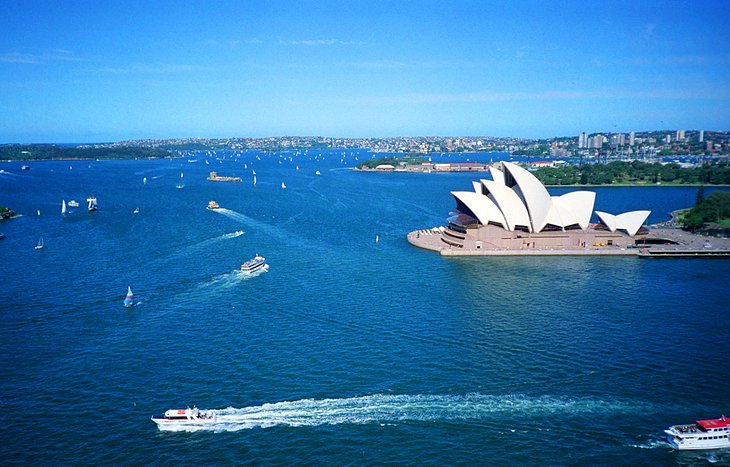
Jrn Utzon, a Danish architect, won an international design competition but withdrew from the project due to technical and financial issues. Construction was finally completed in 1973, ten times over budget. Utzon had left the country by this point, never to return to view his great creation.
Today, you can attend a show, dine at one of the restaurants, or take a guided tour of the Sydney Opera House. Theaters, studios, a music hall, exhibition halls, and a cinema are all part of the complex.
The interior of the Sydney Opera House is fascinating, but its remarkable architecture is best appreciated from afar. Mrs Macquarie's Chair at the Royal Botanic Gardens is a great place to shoot this popular Sydney tourist landmark, or you may take a harbour cruise or ferry and photograph it from the water as you pass by.
Currently, the Sydney Opera House is undergoing a 10-year, $275-million upgrade, but it will continue to operate during the restoration.
2. Sydney Harbour Bridge, New South Wales
The Sydney Harbour Bridge, along with the Sydney Opera House, is one of Australia's most recognisable architectural landmarks. This remarkable feat of building, affectionately known as "the Coathanger," is the world's largest steel arch bridge. It was built 40 years before the Sydney Opera House, in 1932.
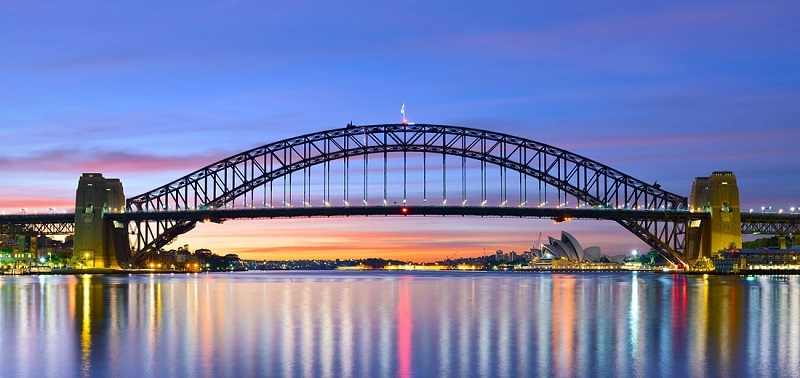
A guided ascent to the top of the bridge, where you can enjoy breathtaking views of the harbour and city, is one of the top things to do in Sydney. The bridge, which rises 134 metres above the harbour and spans 500 metres, connects Sydney's North Shore to the central business district. In addition to the pedestrian route, two railway lines and eight lanes of automobile traffic run across the bridge, with the direction of each lane switchable to meet traffic flow.
The museum in the southeastern pier provides an account of the bridge's history and construction.
Fun fact: Crocodile Dundee's Paul Hogan worked as a painter on the bridge before becoming an international famous.
3. Great Barrier Reef Marine Park, Queensland
The Great Barrier Reef is a must-see for anybody visiting Australia. This World Heritage-listed natural wonder is one of the world's largest living constructions. It's so vast that you can see it from space. It's a must-see for divers, snorkelers, island enthusiasts, and wildlife lovers.
The Great Barrier Reef Marine Park was formed in 1975 to conserve the reef's fragile ecosystems. More than 3,000 coral reefs; 600 continental islands, including the stunning Whitsunday group; 300 coral cays; and inshore mangrove islands are among them.
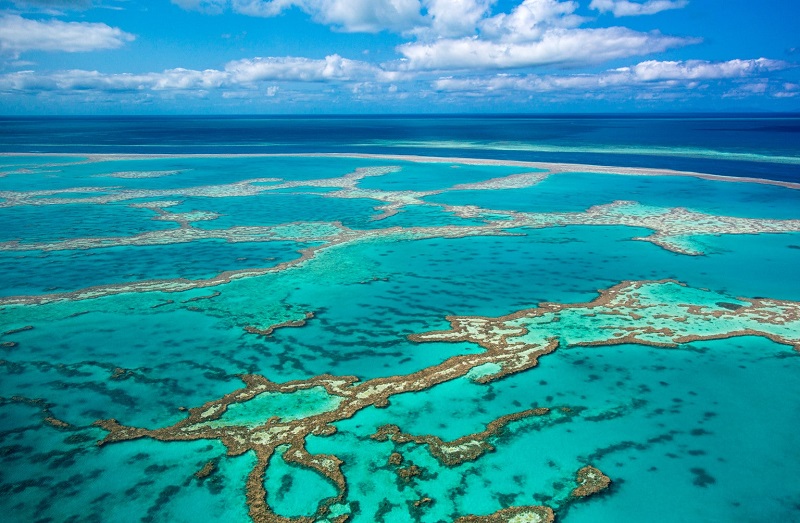
The park, one of the seven natural wonders of the world, extends for 2,300 kilometres along Queensland's east coast (about the distance between Mexico and Vancouver).
The Great Barrier Reef is, unsurprisingly, one of the top places to visit in Australia for diving and snorkelling. The diverse marine life includes soft and hard corals, over 1,600 tropical fish species, sharks, dugongs, dolphins, turtles, rays, and giant clams. Do you prefer to stay dry? Underwater observation stations and glass bottom boats provide views of the reef.
The Great Barrier Reef can be visited in a variety of ways. You can cruise around the islands, take a sightseeing flight, visit the islands on day trips, or snorkel and dive the reefs. Cairns, Port Douglas, and Airlie Beach are the main launching sites for tours on the mainland.
4. Blue Mountains National Park, New South Wales
The picturesque Blue Mountains National Park, a UNESCO World Heritage Site, is a hiker's dream and a popular day excursion from Sydney. It's an easy 81-kilometer journey west of town.
This magnificent park, named after the blue haze emitted by the many eucalyptus trees, protects almost 664,000 acres of wilderness. You may experience stunning gorges, waterfalls, Aboriginal rock paintings, and 140 kilometres of hiking trails during your vacation.
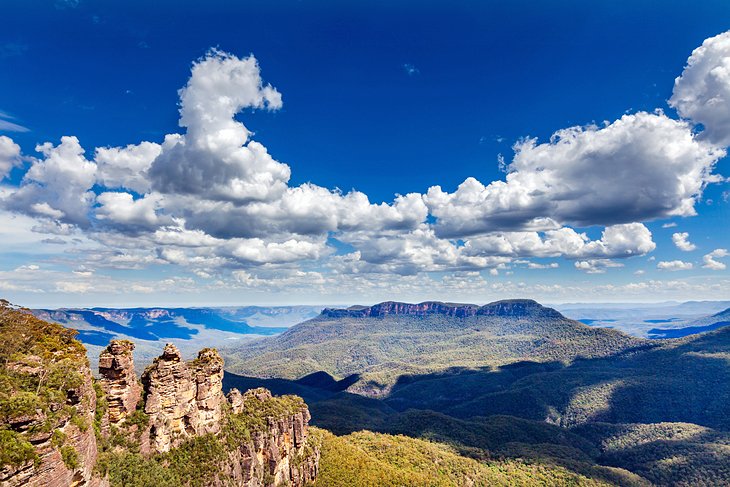
The Three Sisters sandstone rock formations are the most prominent sights in Blue Mountains National Park. The Katoomba Scenic Railway, the world's steepest, whisks passengers down the Jamison Valley through a cliff-side tunnel into an ancient rainforest; and the Skyway, Scenic Cableway, and Scenic Walkway, all of which provide elevated views of the lush woodlands.
Popular activities in the park include hiking, abseiling, rock climbing, mountain biking, and equestrian riding.
5. Bondi Beach, New South Wales
Throw bronzed bodies, blond sand, backpackers, and surf together, and you have one of the world's most famous beaches. Bondi Beach is only 15 minutes by car from Sydney's city centre and is a terrific place to experience Sydney's beach culture. On a hot summer day, laze on the golden dunes, surf the breakers, or cool off in the sea (but stay between the flags).
Few towns in the world can lay claim to such a tempting stretch of sand and sea so close to town. It's no surprise that it's one of Sydney's nicest beaches. Bondi also has some history: it is home to one of the world's oldest surf lifesaving clubs.
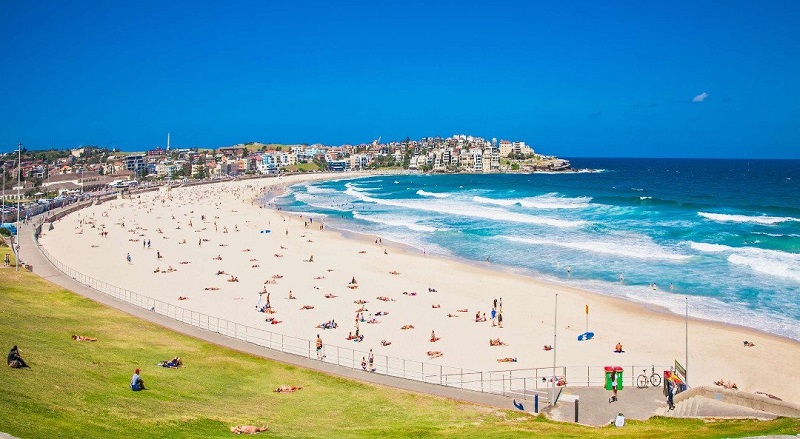 Away from the beach, Bondi offers a variety of activities. Route along the Bondi to Bronte coastline walk. It starts at the southern end of the beach and runs over six picturesque kilometres along sandstone cliffs. If you get hungry, there are plenty of cafés and restaurants around. You can also go shopping at the Sunday markets or swim laps in the ocean pool.
Away from the beach, Bondi offers a variety of activities. Route along the Bondi to Bronte coastline walk. It starts at the southern end of the beach and runs over six picturesque kilometres along sandstone cliffs. If you get hungry, there are plenty of cafés and restaurants around. You can also go shopping at the Sunday markets or swim laps in the ocean pool.
Bondi has a wild side as well. Tourists and locals alike flock here to celebrate Christmas and the New Year. It's a popular destination for tourists.
A word of caution: If you're swimming at Bondi, make sure you stay between the red and yellow flags. Strong rip tides frequently wash unwary swimmers out to sea, particularly at the southern end of this kilometer-long strand. There's a reason Australia created a reality TV show called Bondi Rescue.
6. Daintree National Park, Queensland
Daintree National Park in Far North Queensland, a Wet Tropics World Heritage Area, is home to one of the planet's oldest ecosystems. The Eastern Kuku Yalanji Aboriginal people own the land, and many of its natural characteristics have spiritual importance.
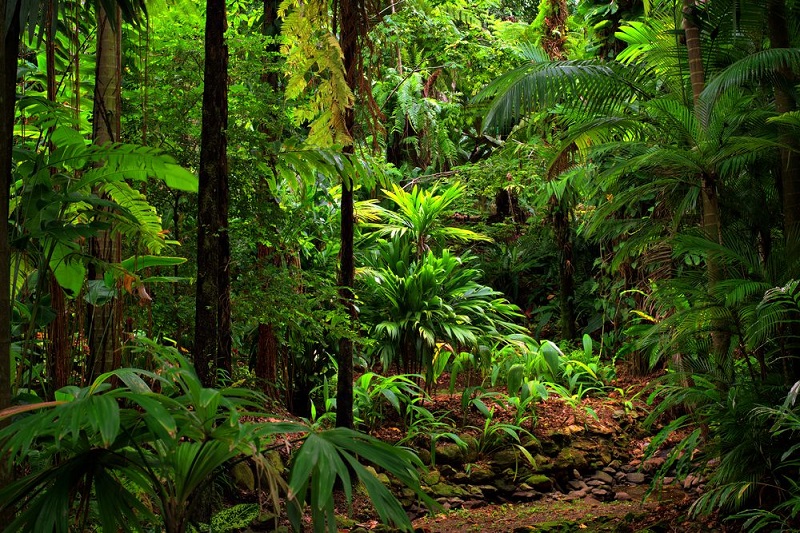 The park is divided into two sections: Mossman Gorge, where crystal-clear streams flow over granite boulders, and Cape Tribulation, one of Australia's most beautiful places to visit. Along the pristine sandy beaches of the Coral Sea, jungle meets reef. This breathtaking stretch of coastline is one of the few sites on the earth where two of the planet's richest ecosystems meet.
The park is divided into two sections: Mossman Gorge, where crystal-clear streams flow over granite boulders, and Cape Tribulation, one of Australia's most beautiful places to visit. Along the pristine sandy beaches of the Coral Sea, jungle meets reef. This breathtaking stretch of coastline is one of the few sites on the earth where two of the planet's richest ecosystems meet.
More than 18,000 plant species and a diverse range of animal species, including the cassowary, crocodile, big blue Ulysses butterfly, and the elusive Bennett's tree kangaroo, can be found in the park.
The resort town of Port Douglas, located just south of the park, is an excellent starting point for wilderness safaris into the park.
7. Uluru-Kata Tjuta National Park, Northern Territory
Uluru (previously Ayers Rock) is one of Australia's most photographed natural wonders, located deep in the country's Red Centre. The spectacular red monolith is the centrepiece of Uluru-Kata Tjuta National Park, a World Heritage Site maintained jointly by Parks Australia and the Aangu people, the traditional landowners.
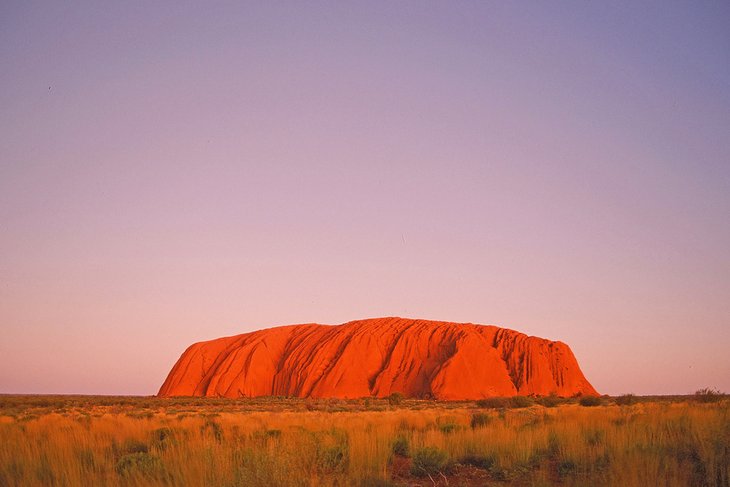 Uluru, which means "shadowy spot" in the local Aboriginal dialect, rises 348 metres over the surrounding plain. The majority of its mass is submerged beneath the earth's surface.
Uluru, which means "shadowy spot" in the local Aboriginal dialect, rises 348 metres over the surrounding plain. The majority of its mass is submerged beneath the earth's surface.
The park also has the red dome-shaped rocks known as Kata Tjuta (the Olgas).
As the sun sets, visitors congregate to witness the hues of Uluru and Kata Tjuta change in the changing light. Joining a tour conducted by Aboriginal guides and rangers is a terrific opportunity to appreciate these holy locations.
8. Kangaroo Island, South Australia
Kangaroo Island puts nature front and centre. Kangaroos hop along the powdery coastlines, sea lions and penguins swim in the crystal-clear waters, and koalas cling to the fragrant eucalyptus trees on this pristine island off South Australia's Fleurieu Peninsula.
Diving is also fantastic. In the temperate waters, you may spot sea dragons and dive shipwrecks off the island's coast.
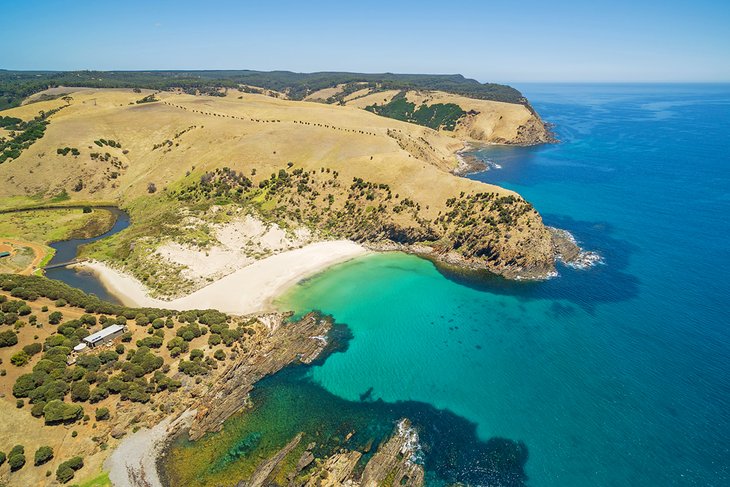 Mother Nature created Kangaroo Island's finest attractions. Admirals Arch and the Remarkable Rocks are two wind-sculpted rock formations in Flinders Chase National Park. Investigate enormous subterranean networks. Hike along soaring sea cliffs and through pristine forests to surf towering dunes and look for animals.
Mother Nature created Kangaroo Island's finest attractions. Admirals Arch and the Remarkable Rocks are two wind-sculpted rock formations in Flinders Chase National Park. Investigate enormous subterranean networks. Hike along soaring sea cliffs and through pristine forests to surf towering dunes and look for animals.
Foodies will be in heaven as well. Local restaurants serve creamy cheeses, Ligurian honey, and fresh fish.
You can fly directly from Adelaide to the island or take a ferry from Cape Jervis on the Fleurieu Peninsula.
Kangaroo Island was destroyed by bushfires in 2020, but the island is well on its path to recovery, and attractions are once again available for business.
9. K'Gari (Fraser Island), Queensland
World Heritage designation K'Gari (Fraser Island) is one of Australia's most unusual tourist destinations. This is the world's largest sand island, located off Australia's east coast between Bundaberg and Brisbane. There are seemingly infinite lengths of beach and sea here, as well as turquoise lakes, emerald jungles, rippling dunes, and interesting animals.
Are you looking for an adrenaline rush? One of Australia's greatest outdoor excursions is a 4WD trip along its surf-thrashed shores. Along the windswept Seventy-Five Mile Beach, you can discover rusted shipwreck hulls, coloured sandstone cliffs known as The Cathedrals, and boiling fish-filled rock pools known as Champagne Pools.
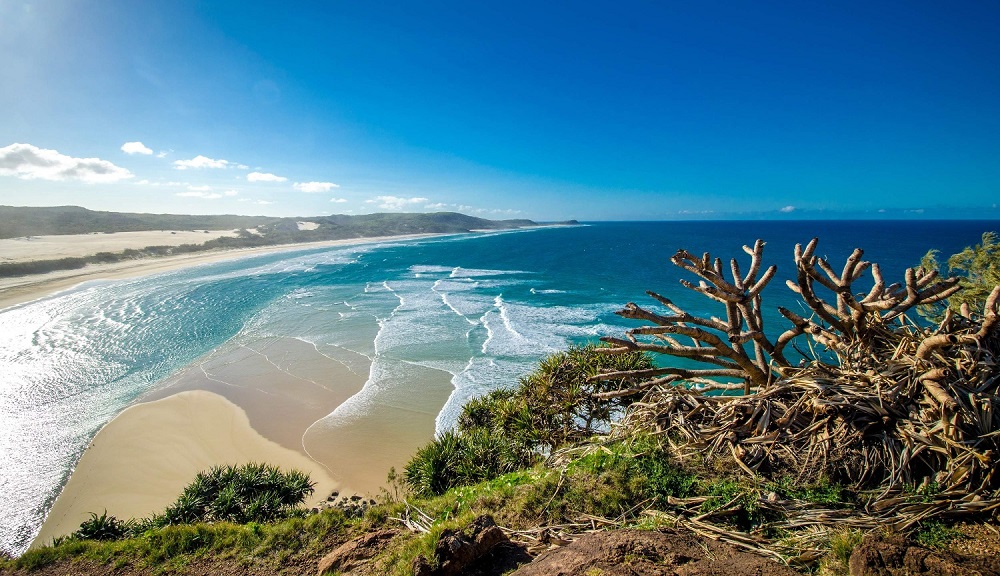
Going inland is equally thrilling. Crystal-clear freshwater rivers and lakes, some fed by springs, others set amid towering sand dunes; and ancient rainforests teeming with an incredible diversity of flora and animals are highlights.
Sharks, dolphins, and whales swim the waters, and dingoes, bats, sugar gliders, and over 300 bird species can be seen on land.
Other activities for nature enthusiasts can be found on K'Gari Fraser Island. Take a whale watching tour, a sunset cruise, a trek through the rainforest paths at Central Station, a float down Eli Creek, or a scenic fly over the stunning scenery.
The two main gateway towns, Rainbow Beach and Hervey Bay, provide ferry access to Fraser Island. Because the island has no cemented roads, four-wheel drive vehicles are required.
10. Cradle Mountain-Lake St. Clair National Park, Tasmania
Cradle Mountain-Lake St. Clair National Park is a Tasmanian tourism treasure and a nature lover's paradise. The rugged, glacier-carved landscape here is defined by sparkling lakes, craggy dolerite peaks, alpine heathland, and dense forests. Mount Ossa, Tasmania's highest point at 1,616 metres, is one of the park's most notable features.
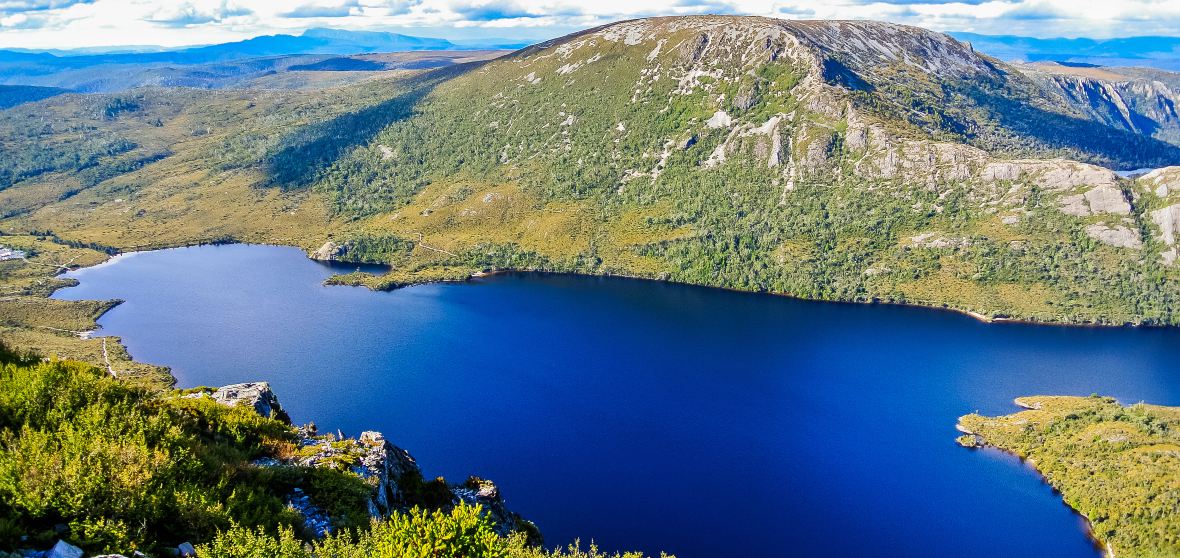
Hiking is wonderful here, as you might anticipate. The Weindorfer Walk, a six-kilometer circle through lush woodlands, and the Lake Dove Walk, with stunning views of Cradle Mountain, are two popular paths (1,545 meters). From the peak of Cradle Mountain, you may enjoy breathtaking views of the central highlands. Experienced hikers can also attempt the legendary Overland Track, which runs south from Cradle Valley to the beautiful Lake St. Clair, Australia's deepest lake.
Among the many species of strange and fascinating creatures to be found in the park are Tasmanian devils, wombats, wallabies, pademelons, and platypus.
Related queries to this article
- Sydney Opera House
- New South Wales
- Great Barrier Reef Marine Park
- Queensland
- Uluru-Kata Tjuta National Park
- Northern Territory
- Sydney Harbour Bridge
- Blue Mountains National Park
- Bondi Beach
- Daintree National Park
- Fraser Island
- Kangaroo Island
- South Australia
- Cradle Mountain-Lake St. Clair National Park
- Tasmania
Read more articles and stories on InstaSity Travel.





